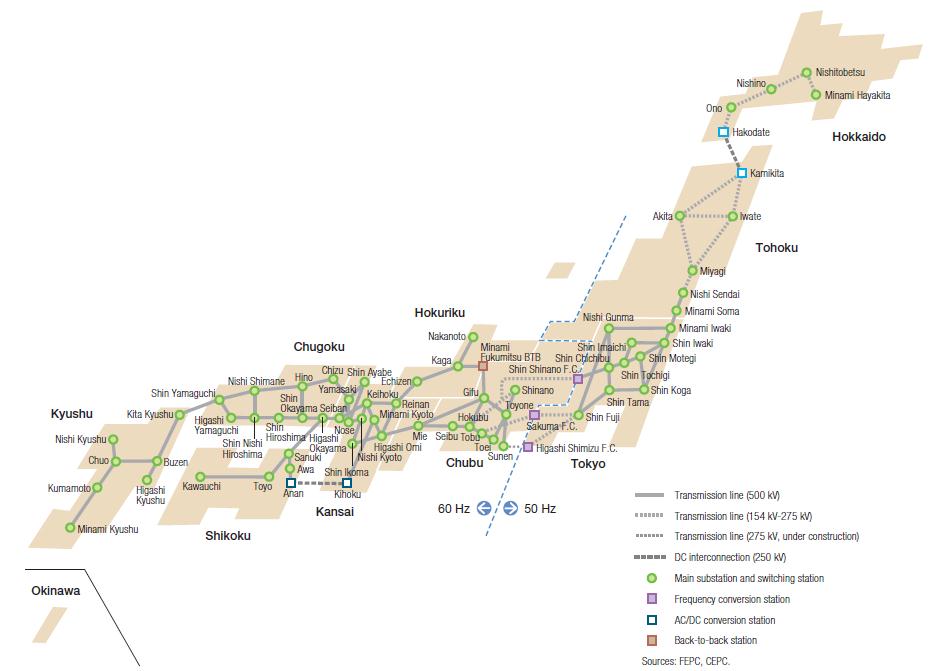As we are thinking more globally about climate change these days in light of Rio+20, I thought you might enjoy a glimpse into the plans of Northeast Asia.
UCS California Outreach Intern, Christa Chavez, recently attended a working group meeting on Energy and Environment hosted by the Northeast Asia Economic Forum and the College of Social Sciences at the University of Hawai’i, Manoa. The theme of this working group meeting was “Energy Outlook After Fukushima.” Attendees at the meeting included leaders in the energy industry and government from Hawaii, Korea, and Japan, as well as a brief memo from China. Below is a breakdown from Christa about what she learned at the meeting.
What’s happening in Japan?
After the devastation and tragedy of the earthquake and tsunami in Japan last year, the country is trying to meet its energy needs without relying so heavily on nuclear power. This May, Japan shut down the last of its 50 nuclear power plants and was nuclear-free for the first time since the 1970s. More recently, a few reactors have been brought back online. As you can imagine, having most of its nuclear plants offline has created a big energy deficit, which will be challenging to replace.

Photo Credit: Y Iinuma, JEPIC
Above, you can see that Japan has two different energy grids, each at different frequencies, which are separated by the dotted blue line in the figure. This makes it difficult to transfer energy across the country, and therefore more difficult to meet the country’s energy demands. So what are Japan’s plans, you ask? According to Mr. Shiro Hori, Senior Policy Adviser for International Affairs for the Agency for Natural Resources and Energy in Japan, the Japanese government has three main goals:
- Increase energy conservation measures and increase energy efficiency
- Maximize development and utilization of renewable energies
- Reduce dependence on nuclear energy
One of the things Japan is doing to advance goal number 2 is to invest in Smart Grid technology. There are a few test cities in Japan, and the Japanese government is also partnering with the state of Hawaii with test beds on the island of Maui.
How about South Korea?
Dr. Kyung-Hwan Toh, seen below, told us about South Korea’s plan for a new Green Growth economy. South Korea sees the problem of climate change as an opportunity for a new “green” paradigm. They have many of the same goals as Japan, including increased energy conservation, increased energy efficiency, reduced greenhouse gas emissions, and the use of Smart Grid technology. Another interesting fact from Dr. Toh is that, in addition to the goal of becoming a world leader in renewable energy technologies, South Korea intends to double its nuclear power plants by 2030 as part of its greenhouse gas reduction strategy. South Korea will also be enacting a renewable portfolio standard this year: 11% by 2030.

Dr. Kyung-Hwan Toh, Director General for Energy Industry Policy, Ministry of Knowledge Economy, Korea. Photo credit: Leah Kim, NEAEF
What’s Up in Hawaii?
The representatives at the meeting for Hawaii included Dr. Robert Alm, Executive Vice President for Hawaiian Electric; Jeff Mikulina, Executive Director of Blue Planet Foundation; and Dr. Terry Surles, Executive Vice President of R&D at Desert Research Institute.

Dr. Robert Alm of Hawaiian Electric Co. Photo credit: Leah Kim, NEAEF
My favorite part of Dr. Alm’s presentation was when he explained that renewable energy is actually cost-competitive in Hawaii, which is not true in most places. Hawaii depends primarily on 100% imported oil for its energy needs, and because that oil is so expensive, the cost of renewable energy (especially wind energy) is actually cheaper or comparable in many scenarios. Therefore, Hawaii is a perfect place to pioneer deep penetration of renewable energy on the grid.

A cost-comparison of oil versus many other types of renewable energies. Photo credit: Dr. Robert Alm's presentation.
Hawaii has one of the highest renewable portfolio standards out of all states: 40% by 2030. Like anywhere else, they do have barriers to overcome in order to increase use of renewable energy:
- Population is concentrated on Oahu, but renewable energy sources are primarily on other islands.
- The island’s grids are not connected and undersea cables are very expensive.
- Not In My Backyard (NIMBY) syndrome.
- The usual grid stability problems from renewable energy intermittency.

A map of renewable energy projects in Hawaii. From left to right you have Oahu, next is Molokai on the top and Lanai on the bottom, then Maui, and furthest to the right is the big island, Hawaii. Photo credit: Dr. Robert Alm's presentation.
However, Hawaii has many ongoing projects on almost all of its islands, and is on its way to reaching its goals.

Christa Chavez, presenting the results of a geothermal energy conference to the group. Photo credit: Leah Kim, NEAEF
Thanks to Christa for sharing her experience! Later this year she will be going to Hainan, China for a Young Leader’s Program on Inter-regional Cooperation.
